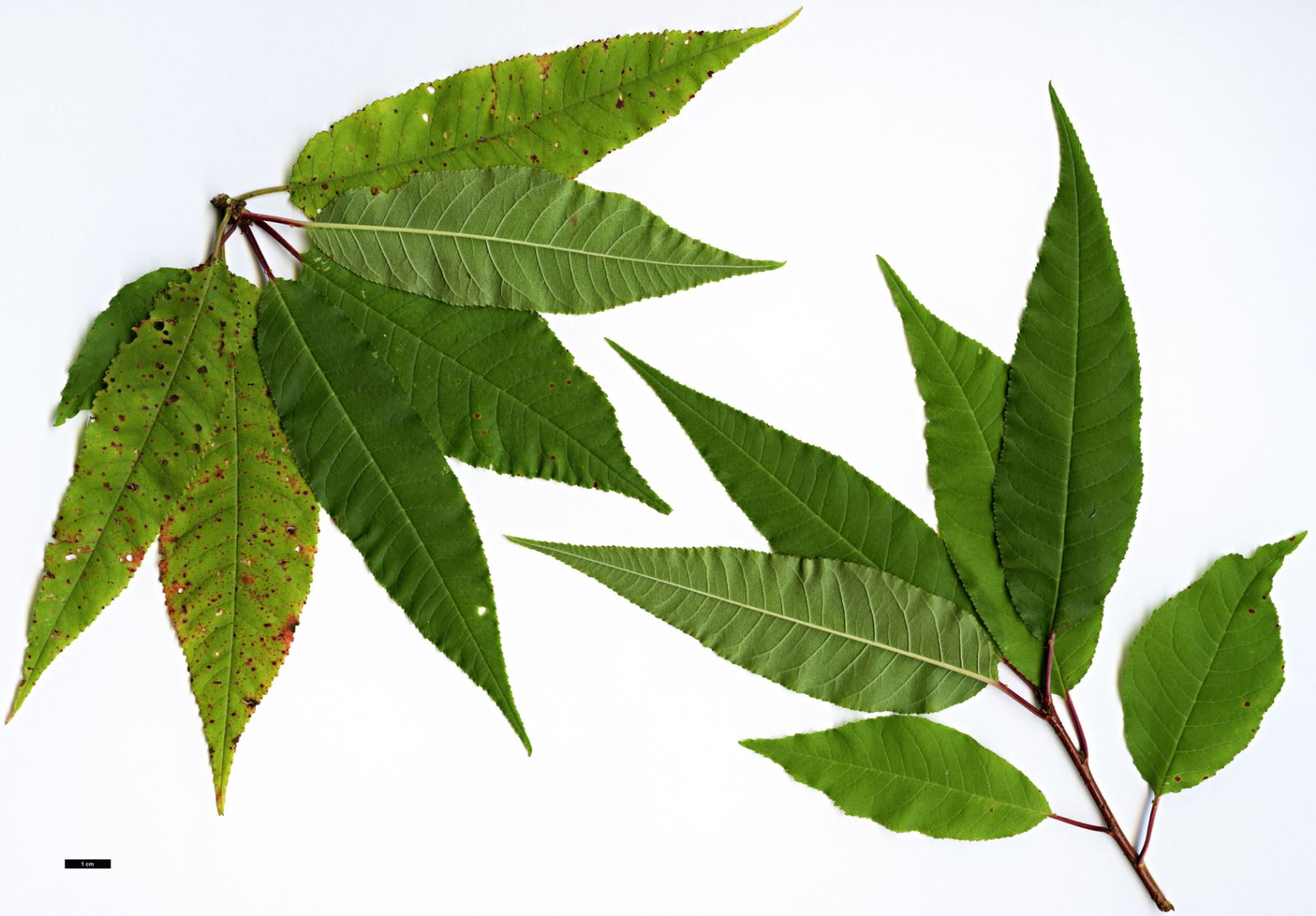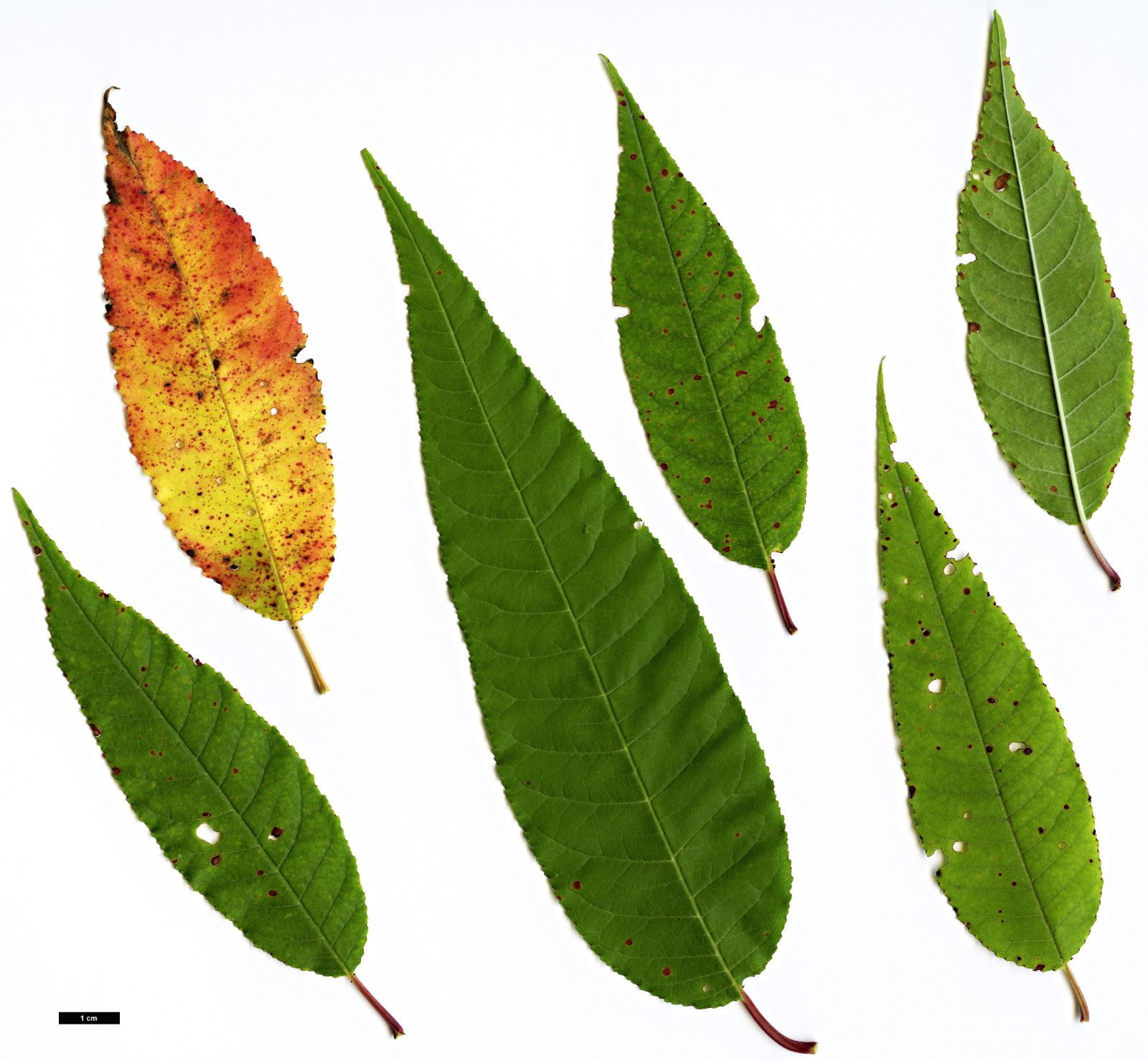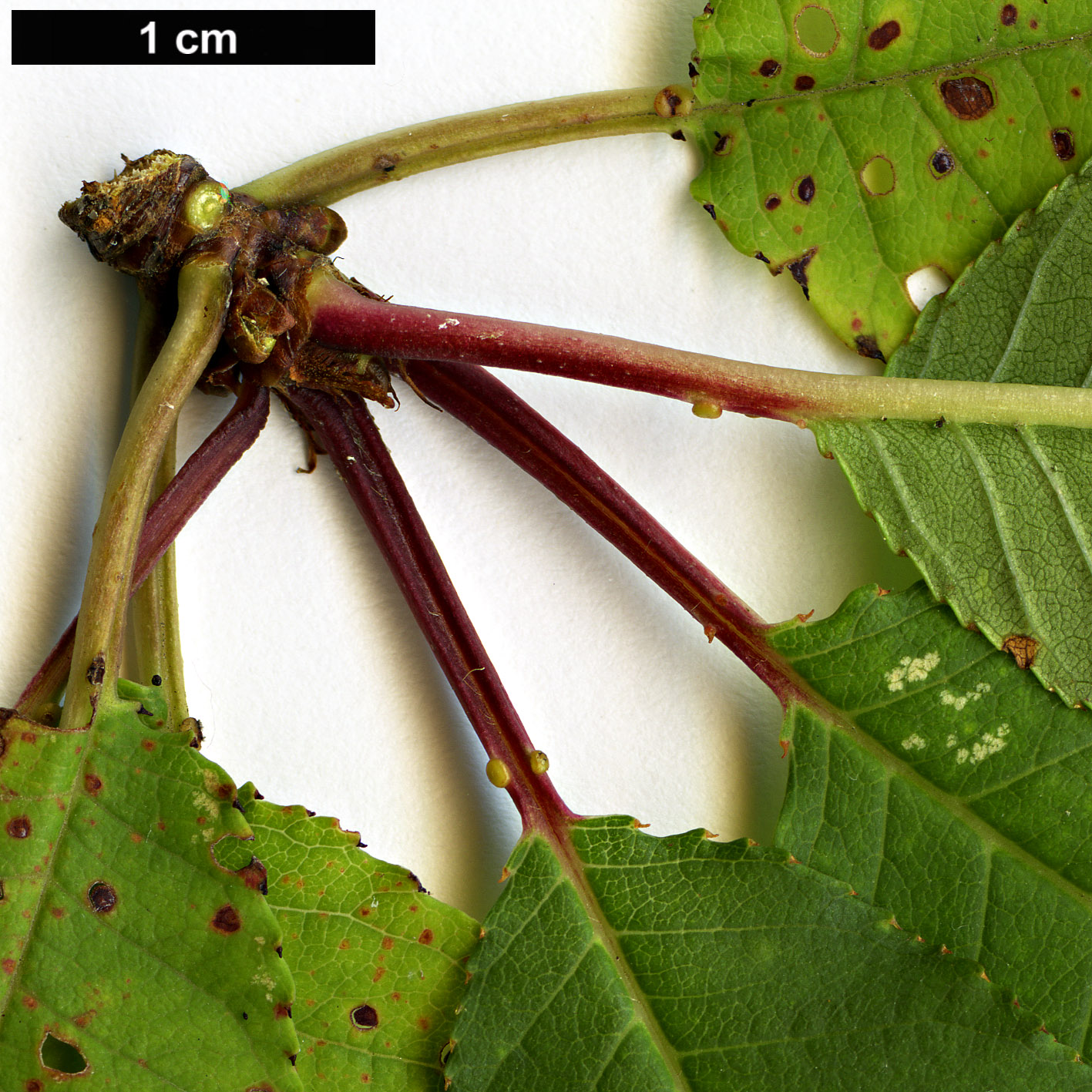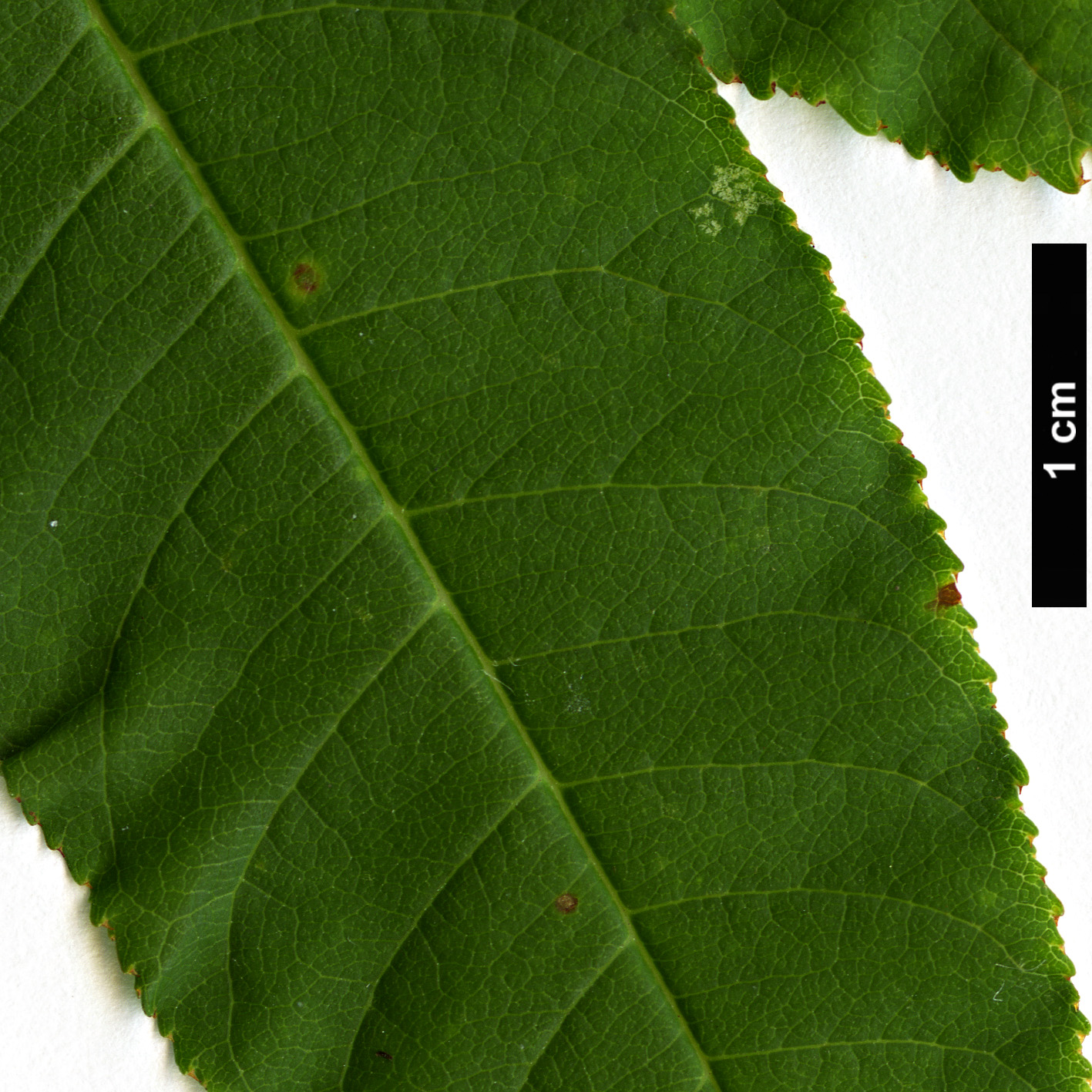Prunus pensylvanica
Credits
Article from Bean's Trees and Shrubs Hardy in the British Isles
Recommended citation
'Prunus pensylvanica' from the website Trees and Shrubs Online (treesandshrubsonline.
Infraspecifics
Other taxa in genus
- Prunus alleghaniensis
- Prunus americana
- Prunus × amygdalo-persica
- Prunus amygdalus
- Prunus angustifolia
- Prunus apetala
- Prunus arabica
- Prunus argentea
- Prunus armeniaca
- Prunus avium
- Prunus besseyi
- Prunus brigantina
- Prunus campanulata
- Prunus canescens
- Prunus cantabrigiensis
- Prunus cerasifera
- Prunus cerasus
- Prunus cocomilia
- Prunus concinna
- Prunus conradinae
- Prunus consociiflora
- Prunus cornuta
- Prunus cuthbertii
- Prunus dasycarpa
- Prunus davidiana
- Prunus × dawyckensis
- Prunus dielsiana
- Prunus domestica
- Prunus dulcis
- Prunus emarginata
- Prunus × fontanesiana
- Prunus fruticosa
- Prunus glandulosa
- Prunus grayana
- Prunus himalaica
- Prunus hortulana
- Prunus humilis
- Prunus ilicifolia
- Prunus incana
- Prunus incisa
- Prunus jacquemontii
- Prunus kansuensis
- Prunus lannesiana
- Prunus laurocerasus
- Prunus litigiosa
- Prunus lusitanica
- Prunus maackii
- Prunus mahaleb
- Prunus maritima
- Prunus maximowiczii
- Prunus microcarpa
- Prunus mira
- Prunus mugus
- Prunus mume
- Prunus nigra
- Prunus nipponica
- Prunus orthosepala
- Prunus padus
- Prunus persica
- Prunus pilosiuscula
- Prunus prostrata
- Prunus pumila
- Prunus rufa
- Prunus salicina
- Prunus sargentii
- Prunus serotina
- Prunus serrula
- Prunus serrulata
- Prunus sibirica
- Prunus × sieboldii
- Prunus simonii
- Prunus sogdiana
- Prunus speciosa
- Prunus spinosa
- Prunus ssiori
- Prunus subcordata
- Prunus subhirtella
- Prunus takesimensis
- Prunus tangutica
- Prunus tenella
- Prunus tomentosa
- Prunus triloba
- Prunus virginiana
- Prunus × yedoensis
A deciduous tree reaching 30 to 40 ft in height, with a trunk 11⁄2 ft in diameter; bark bitter, aromatic, reddish and shining on the young shoots. Leaves ovate, long-pointed, 3 to 41⁄2 in. long, 3⁄4 to 11⁄4 in. wide, glabrous, bright green, finely toothed, the teeth much incurved and gland-tipped; stalk glabrous, 1⁄2 in. long, with one or two glands at the top. Flowers 1⁄2 in. across, white, produced four to ten together in umbellate clusters or short racemes, each flower on a slender glabrous stalk 3⁄4 in. long; petals round, downy outside at the base; calyx glabrous, with rounded lobes. Fruits round, 1⁄4 in. in diameter, red.
Native of N. America, where it is very widely spread; introduced to England in 1773. It flowers very freely in this country at the end of April and in May when the leaves are half-grown, and is very beautiful then. According to Sargent it is a short-lived tree, but plays an important part in the preservation and reproduction of N. American forests. Its abundant seed is freely distributed by birds, and the rapidly growing young trees give valuable shelter to the other trees longer-lived than they are, which ultimately suppress them. It might be planted in thin woodland, in places where our native P. avium thrives.





